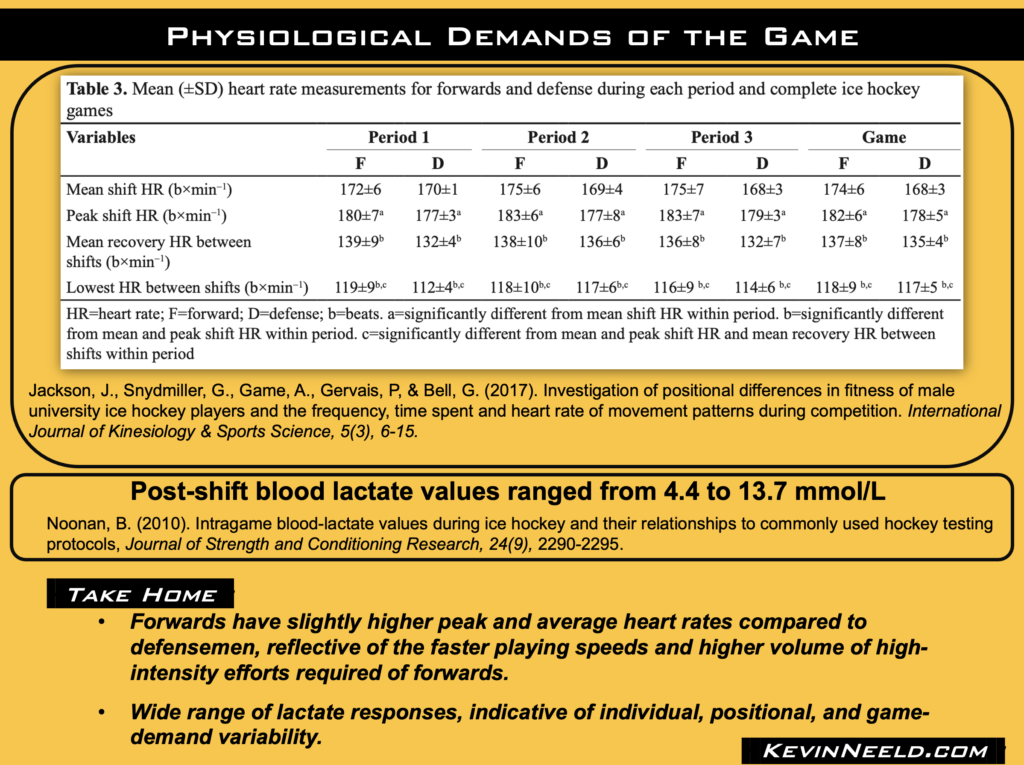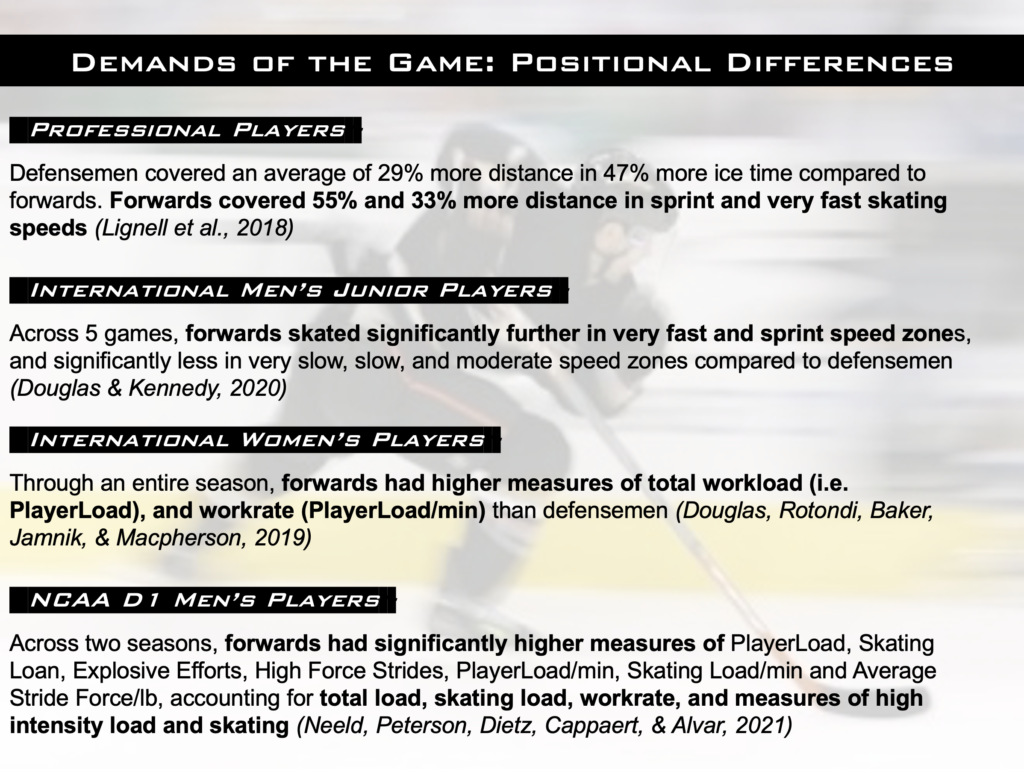One of the most common questions I get is “what’s the best way to condition for hockey?” Often times, people are looking for one prescription (e.g. “Do 12 sets of 15s of work with 45s of rest”).
This review paper from Girard et al. (2010) details the factors that contribute to fatigue in repeat sprint efforts (must read for anyone working in strength and conditioning or sports science roles).

In order to have repeat sprint ability, you need to first have sprint ability. Training to improve maximal output and rate of energy production will positively impact single effort bursts.
In order to sustain output, training maximum effort, longer duration efforts (e.g. 20-60s) will help improve buffering.
Lastly, sustained outputs AND recovery from maximal effort bursts, including replenishing depleted energy stores, are reliant on the aerobic system, so aerobic training can have a profound effect on within-shift, within-gam, and within-season sustainability.
The key take home here is that conditioning for hockey, like most team sports, is going to require developing all of the energy systems.
Feel free to post any comments/questions below. If you found this helpful, please share/re-post it so others can benefit.
To your success,
Kevin Neeld
SpeedTrainingforHockey.com
HockeyTransformation.com
OptimizingAdaptation.com
P.S. Get your off-ice training programs here >> Hockey Conditioning Programs
Enter your first name and email below to sign up for my FREE Sports Performance and Hockey Training Newsletter!







 Use CODE: "Neeld15" to save 15%
Use CODE: "Neeld15" to save 15%